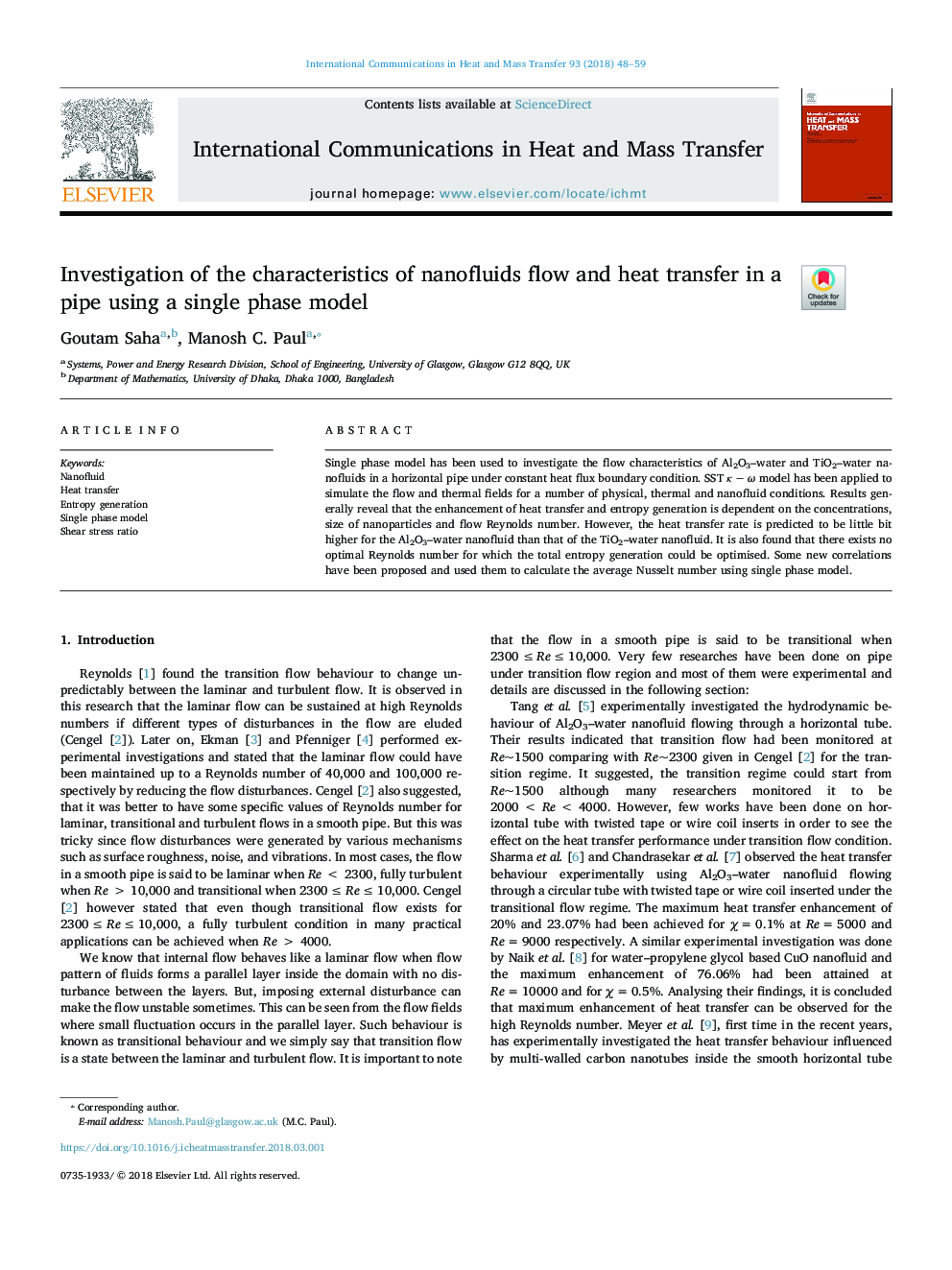| Article ID | Journal | Published Year | Pages | File Type |
|---|---|---|---|---|
| 7052930 | International Communications in Heat and Mass Transfer | 2018 | 12 Pages |
Abstract
Single phase model has been used to investigate the flow characteristics of Al2O3-water and TiO2-water nanofluids in a horizontal pipe under constant heat flux boundary condition. SST κâ¯ââ¯Ï model has been applied to simulate the flow and thermal fields for a number of physical, thermal and nanofluid conditions. Results generally reveal that the enhancement of heat transfer and entropy generation is dependent on the concentrations, size of nanoparticles and flow Reynolds number. However, the heat transfer rate is predicted to be little bit higher for the Al2O3-water nanofluid than that of the TiO2-water nanofluid. It is also found that there exists no optimal Reynolds number for which the total entropy generation could be optimised. Some new correlations have been proposed and used them to calculate the average Nusselt number using single phase model.
Related Topics
Physical Sciences and Engineering
Chemical Engineering
Fluid Flow and Transfer Processes
Authors
Goutam Saha, Manosh C. Paul,
